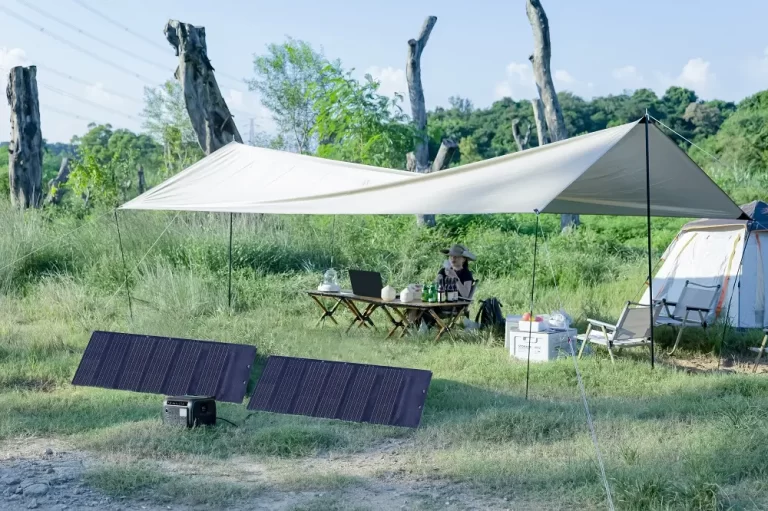Solar energy storage systems play a vital role in modern energy management, providing sustainable, reliable, and cost-effective energy solutions for both domestic and commercial customers. By using products such as the Sottlot Alpha3000 Hybrid Off-Grid Inverter and the DPE-5K Battery Pack, users can achieve energy independence, reduce carbon emissions, and lower long-term costs. This guide will take a closer look at the key components of a solar energy storage system, the installation process, and best practices for indoor and outdoor environments to help you realize the full potential and longevity of your solar energy storage system.

Understanding System Components
1. Sottlot Product Overview
Sottlot is a leading brand in solar energy storage technology, offering flexible design and high-performance energy storage solutions.
- Alpha3000 Hybrid Off-Grid Inverter: Seamlessly integrates energy production and storage, managing the flow of energy between solar panels, batteries, and the grid.
- DPE-5K Battery Pack: Adopts advanced lithium iron phosphate (LiFePO4) technology to ensure stable and reliable energy storage.
2. Key Components of a Solar Energy Storage System
- Inverter: Converts direct current (DC) generated by solar panels into alternating current (AC), which is usable by home or commercial equipment.
- Battery Pack: Stores excess solar energy and provides backup power at night or during power outages.
- Solar Panels: Capture sunlight and convert it into electricity to power an inverter or for storage.
3. How the Components Work Together
Solar panels convert sunlight into electricity, prioritizing supply to the current load, and storing excess power in the battery. When there is insufficient sunlight, the stored power in the batteries is released to ensure continuous power.

Indoor Installation Guide
1. Pre-Installation Checks
- Well-Ventilated Area: Choose an area with good air circulation to avoid overheating the equipment. Solar energy storage systems generate heat during operation, and proper ventilation helps prolong the life of the equipment and improves operational efficiency.
- Wall Strength: Ensure that the wall can support the weight of the battery pack, such as the DPE-5K. This prevents damage and potential safety hazards caused by falling equipment.
- Proximity to Load Points: Place the equipment close to major electrical load points to reduce power loss and wiring costs. This helps maximize system efficiency and reduce installation costs.
2. Recommended Installation Setup
- DPE-5K Battery Pack: Securely fasten the battery pack to a reinforced wall or stable platform to prevent it from tilting or falling, ensuring safety and stability.
- Alpha3000 Inverter: Install the inverter in a location that is easy to observe and maintain, maintaining at least 0.5 meters of clearance around the unit. This helps prevent overheating and ensures ease of operation during maintenance.
3. Cabling and Connection Best Practices
- Cable Selection: Use cables that meet the specifications to ensure proper voltage and current carrying capacity, preventing overloads and the risk of short circuits.
- Fixed Cables: Secure cables properly to prevent accidental disconnection and ensure long-term stable operation.
- Monitoring Tools: The integrated ADELOT application tracks system performance in real-time and detects potential issues, helping to identify and resolve system faults promptly.
Outdoor Installation Guide
1. Choose the Right Location
- Optimize Sunlight: Install solar panels in an unshaded location to maximize light reception. The efficiency of solar panels is directly dependent on the amount of sunlight they receive.
- Protection: Protect the inverter and battery packs from severe weather damage by installing IP65 or higher-rated protective covers. This extends the life of the equipment and ensures system stability.
2. Durability Features
- Temperature Adaptability: The Alpha3000 operates reliably in the range of -10°C to 50°C, making it suitable for a wide range of climates and ensuring uninterrupted operation throughout the year.
- Material Strength: The DPE-5K is made of robust materials that can withstand a wide range of environmental stresses, reducing the risk of damage caused by external shocks or weather conditions.
3. Installation of Solar Panels
- Tilt Angle Adjustment: Adjust the panel angle (usually 30°-45°) according to your geographical location. This maximizes light capture and increases power generation efficiency.
- Firm Fixing: Use sturdy brackets to withstand strong winds and environmental shocks, ensuring long-term stable operation of the system.
4. System Connection and Testing
- Waterproof Connections: Use waterproof connectors to prevent moisture intrusion and protect the system from environmental damage.
- Elevated Battery Pack: Ensure the battery pack is elevated above potential ground water sources to prevent damage from flooding.
- Comprehensive Testing: Ensure that the equipment is installed and functioning properly to prevent potential failures and operational interruptions.
Safety and Maintenance Precautions
1. Comply with International Safety Standards
- Certifications and Codes: Follow local and international electrical codes to ensure installation safety and reliability. Non-compliance may lead to failures or accidents.
- Professional Assistance: Seek professional support to ensure that wiring and installation specifications are correct, preventing installation errors.
2. Maintain Optimal Performance
- Cleaning and Inspection: Clean solar panels regularly to remove dust and dirt, preventing efficiency loss. Accumulated dust can reduce the photovoltaic conversion efficiency and the amount of power generated.
- Cable Inspection: Regularly check wiring connections and replace any damaged components to prevent power interruptions and safety risks.
3. Battery Management
- Deep Discharge and Overcharge Prevention: Avoid extreme charging and discharging situations to extend the lifespan of DPE-5K batteries.
- Performance Monitoring: Use the ADELOT app to monitor battery health and optimize operational strategies for long-term stable performance.
The successful installation of a solar energy storage system depends on a thorough consideration of environmental conditions and energy requirements. While indoor installations offer better environmental protection, they require proper ventilation and space planning, outdoor installations provide more flexibility but demand reinforced protection. Sottlot’s Alpha3000 Hybrid Off-Grid Inverter and DPE-5K Battery Pack offer the ideal solution for a wide range of installation scenarios due to their high performance and flexibility, helping to achieve energy independence and sustainable development.




